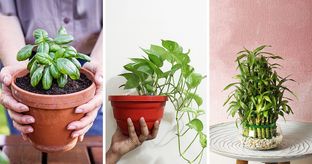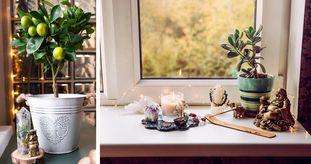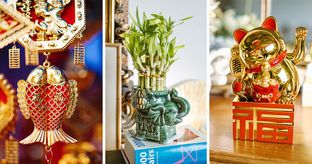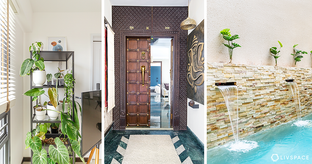Vastu vs Feng Shui is a topic much talked about. But most people often get confused between the two to be able to reap the benefits of either. Vastu Shastra sure shares some principles with Feng Shui but the two are dramatically different from each other in some ways. While the principles of Vastu can ideally be applied to a home that is being built from scratch, Feng Shui has relatively simpler principles which you can use at home any time.
Vastu means “dwelling” and Shastra means “science. Whereas, Feng means “air” and Shui means “water.”
Let us break each one down for you and tell you how each system of knowledge can help you harbor good energies at home.
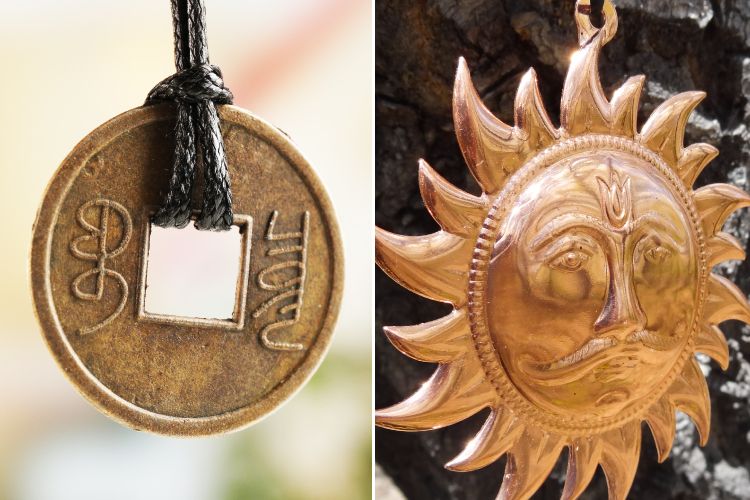
Vastu vs Feng Shui: The Commonalities
Vastu and Feng Shui are based on these similar principles:
Origin: Vastu Shastra, which is thousands of years older than Feng Shui, is where the principles of Feng Shui originates from.
Basis: Both Vastu Shastra and Feng Shui practices are based around powerful cosmic energies. One of the major elements in both practices is that it is backed by mathematical calculations.
Dos & don’ts: Both these practices believe in providing remedies by placing objects and tools to improve energies at home. Eg: placing buddha statues, hanging wind chimes and so on. Clutter around the home is something that both the practices clearly forbid.
Chi and Prana: The philosophies of Feng Shui are created around the flow of energy, called Chi in Chinese culture and Prana (life) in Hindu culture for Vastu Shastra.
Energy fields: Both the practices believe that the centre of the home is where all the energies combine, and thus, that makes it the most important part of the house. Both, Vastu Shastra and Feng Shui use the eight compass directions to determine placement and architecture, and five elements to attract positive energies.

Vastu vs Feng Shui: The Differences
Given the similarities, key differences are important to be studied in the Vastu vs Feng Shui debate.
Basis of principles: While Vastu Shastra is based on science, Feng Shui is based more on geographical considerations.
Way of life vs architecture: While Feng Shui promotes a positive way of life and increasing the flow of positive energies at home, Vastu Shastra is more about constructing a home that is suitable according to the guidelines of this theory.
Auspicious direction: According to Vastu, North is the most auspicious direction, since it is the source of magnetic energy. Whereas, in Feng Shui, South is regarded as auspicious, since it takes advantage of the fact that the sun moves from East to West.
Colours: When it comes to colours, Vastu Shastra clearly states that the walls should be painted in bright colours, like red, but Feng Shui states differently. Feng Shui says that a home should be bathed in soothing colours like white, beige, cream and so on.
Objects used: Another major difference is in the objects that the two theories use. While Feng Shui uses wind chimes, laughing Buddha and bamboos, Vastu emphasises the use of tulsi plant or placing Ganesha idols in the right direction, for example.
The North-East issue: North-East is considered as the zone that rules the mind, according to both. While Vastu suggests water to be placed here, Feng Shui says that this corner is governed by the earth element. Therefore, according to Feng Shui, you could place earthen things here.
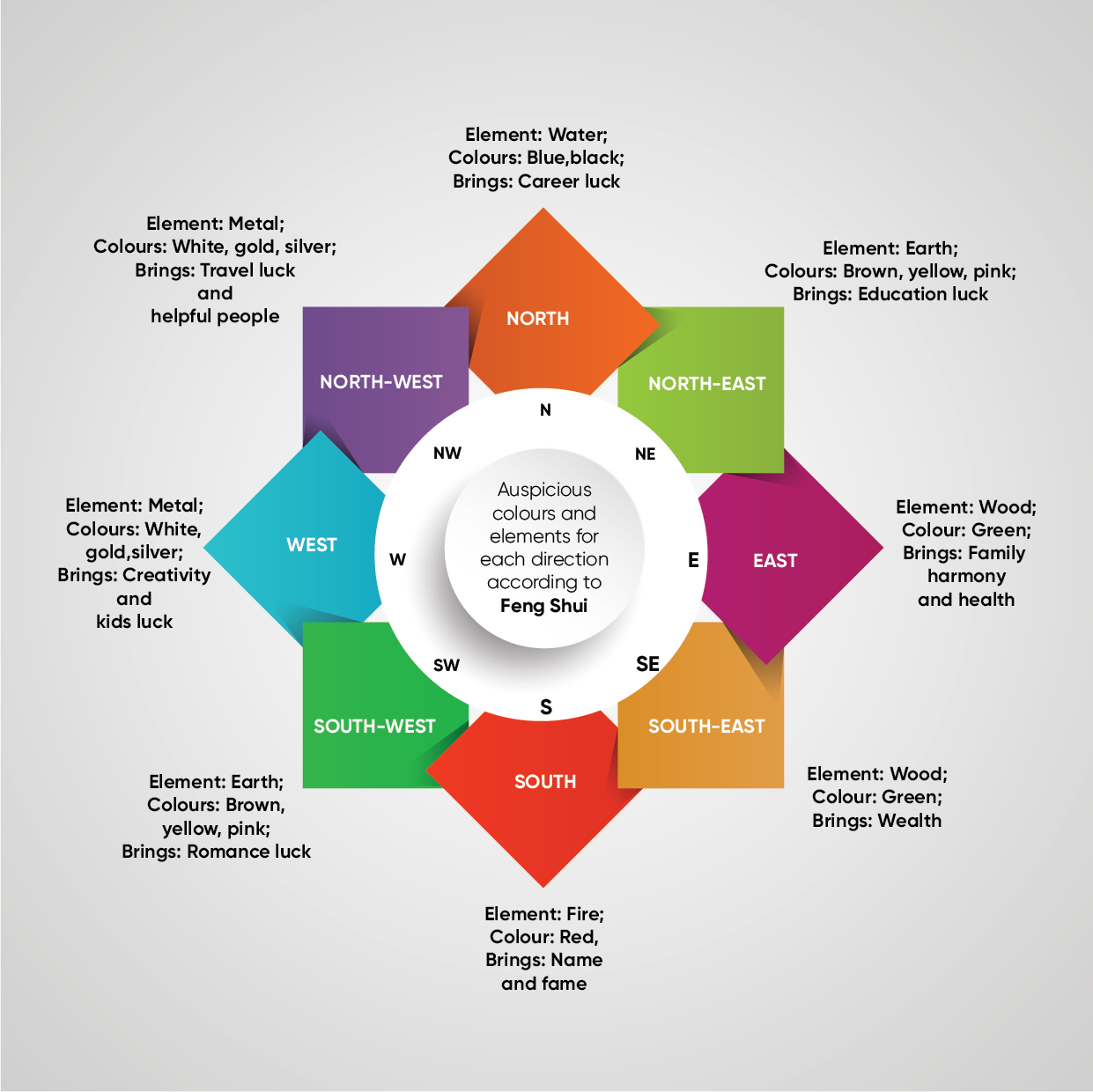
A quick look at the application of each at home
#1: Centre of the home
Vastu Shastra: The purpose of the centre of the home is to receive the highest quality of energies. Therefore, one should always have open spaces and courtyards in the centre.
Feng Shui: The centre is called the heart of the home. A place where all energies combine. Therefore, it says that you should always keep this space clean and have happy energies here.
#2: Home entrance
Vastu Shastra: Experts say that the front door should always be in the North and East direction as these are the most auspicious directions. In order to find the best direction for your front door, you can divide the home into four parts and have the door in the fourth section of the house. Make sure to read Vastu for Home Entrance: Expert Advice and Tips You Must Know to do it the right way.
Feng Shui: the most ideal direction to have the front door is the South. And since Feng Shui is governed by colours, you must try and keep the main door in red which is the colour of the South fire element.
#3: Kitchen
Vastu Shastra: Kitchens should not be located under or above the pooja room, bathroom and bedroom. Reserve the South-East direction for your kitchen. Using black in the kitchen is inauspicious. Instead of that, you can use bright colours like green, orange, red and so on. But that’s not all. Check out all the vastu-friendly details for your kitchen.
Feng Shui: This advices against having a bathroom above your kitchen. You should also try and have your kitchen right in front of your entrance door. Warm colours are the best colours for your kitchen according to Feng Shui experts.
#4: Bedroom
Vastu Shastra: The ideal direction to build the master bedroom is the South-West corner of the home. South-East is not ideal since “Agni” governs it and it leads to quarrels and misunderstandings between couples. We’ve got more vastu tips for your bedroom as well.
Feng Shui: The best colours for bedrooms are pearly whites and dark chocolate browns. The position of the bed is very important according to Feng Shui and so are bedroom art and decor items. A good rule of thumb is to place the bed diagonal from the door.
#5: Pooja room
Vastu Shastra: It propagates the North-East direction to have your pooja room so as to harness maximum energy from the sun. The idol should be away from the wall to ensure continuous airflow around the idol. Storage should face the south-east to ensure there’s nothing obstructing sunlight. Here are other simple vastu tips to design your pooja room.
Feng Shui: The pooja room is supposed to be built in the North-East direction as positive cosmic energy flows in from there. Wood and marble are the best materials for pooja rooms according to Feng Shui.
#6: Kids Room
Vastu Shastra: It is ideal for a child’s room to face the East, North-East or North. East is the most preferred among these as it means that the room faces the rising sun. It is advisable for the kids’ room to face open spaces. Usher Good Vibes into the Kids Room & Study Area with these tips.
Feng Shui: This has some exceptional rules for kids rooms. It says that this space should be free of any clutter, have ample flow of air, do not place your child’s bed directly under a window or inline with a mirror. It also advises against using photos of wild animals or war scenes anywhere in the room.
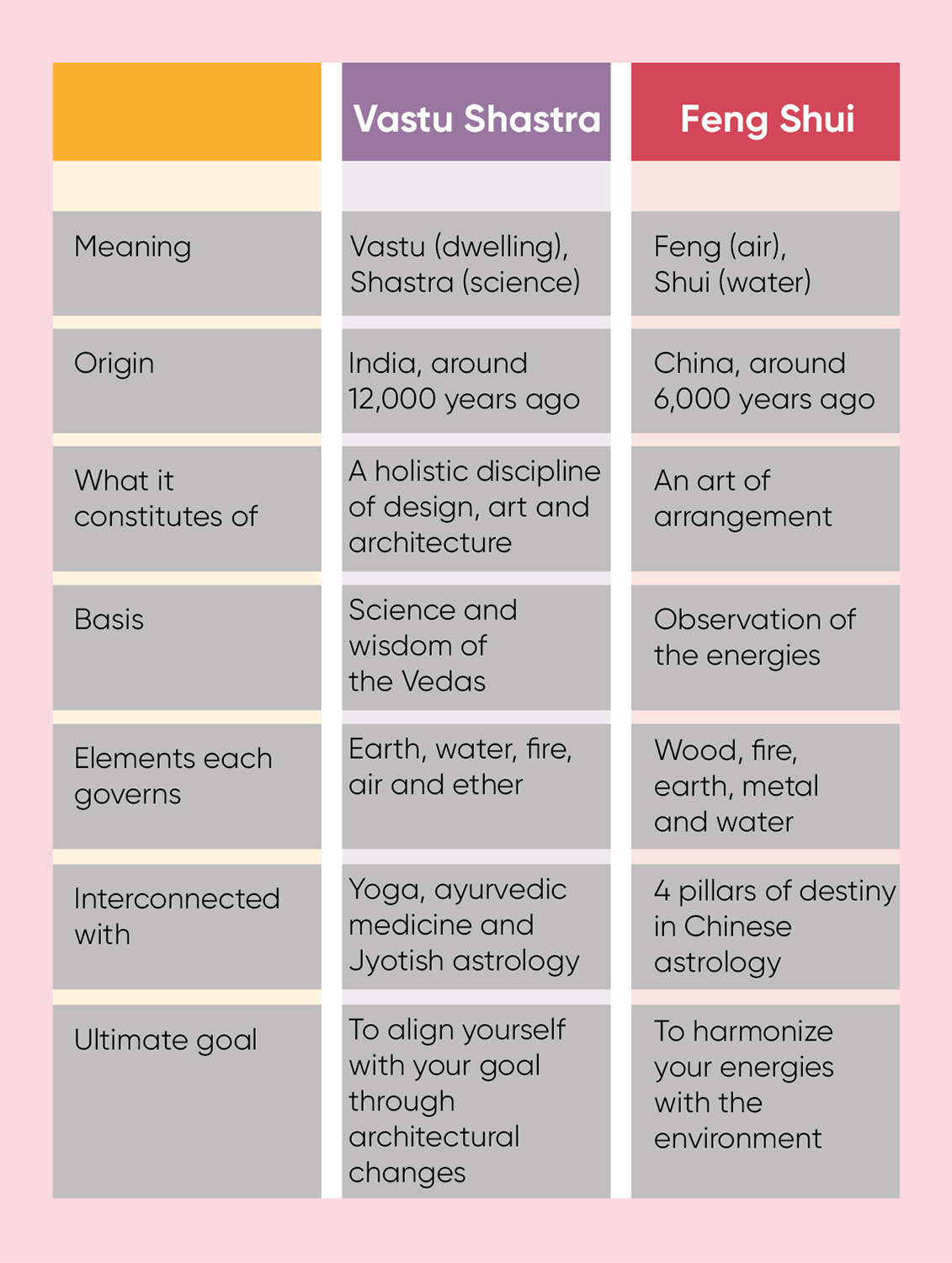
Our Two Cents
Now that you know what Vastu Shastra and Feng Shui stand for, the next time you’re deciding on which one to use for your home, you’ll know what to keep in mind. We recommend Vastu Shastra if you’re building a new home. Many architects and designers swear by these principles. If you’re looking to uplift the vibes in your life and home, we recommend Feng Shui. Try using colours according to Vastu Shastra and Feng Shui. Also, if you’re looking for smaller or easier remedies, then try placing objects in the right spot or direction. Have faith in the power of positivity and lead a happy life!
Look at this video for some Vastu tips for your home
Stay on the Right Side of Vastu With These Tips and always follow the right rules so as to not make any major mistakes.
Wondering how our customers feel about working with Livspace? You can check out the Livspace reviews here!
Send in your comments and suggestions to editor@livspace.com.





















